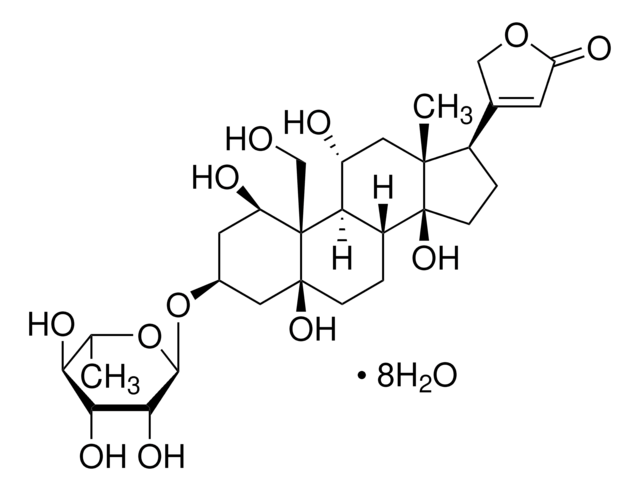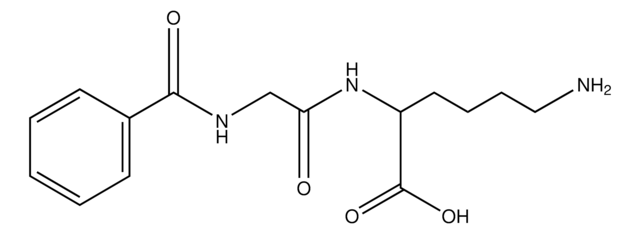5.30197
CD45 Inhibitor VI
Synonym(e):
CD45 Inhibitor VI, 2-(4-Acetylanilino)-3-chloronaphthoquinone, Compound 211, Protein Tyrosine Phosphatase CD45 Inhibitor VI, PTP Inhibitor XXXII
About This Item
Empfohlene Produkte
Assay
≥98% (HPLC)
Qualitätsniveau
Form
powder
Hersteller/Markenname
Calbiochem®
Lagerbedingungen
OK to freeze
protect from light
Farbe
orange
Löslichkeit
DMSO: 25 mg/mL
Lagertemp.
2-8°C
Allgemeine Beschreibung
Biochem./physiol. Wirkung
CD45
Verpackung
Warnhinweis
Rekonstituierung
Sonstige Hinweise
Rechtliche Hinweise
Signalwort
Warning
H-Sätze
Gefahreneinstufungen
Aquatic Acute 1 - Eye Irrit. 2 - Skin Irrit. 2 - STOT SE 3
Zielorgane
Respiratory system
Lagerklassenschlüssel
11 - Combustible Solids
WGK
WGK 3
Flammpunkt (°F)
Not applicable
Flammpunkt (°C)
Not applicable
Analysenzertifikate (COA)
Suchen Sie nach Analysenzertifikate (COA), indem Sie die Lot-/Chargennummer des Produkts eingeben. Lot- und Chargennummern sind auf dem Produktetikett hinter den Wörtern ‘Lot’ oder ‘Batch’ (Lot oder Charge) zu finden.
Besitzen Sie dieses Produkt bereits?
In der Dokumentenbibliothek finden Sie die Dokumentation zu den Produkten, die Sie kürzlich erworben haben.
Unser Team von Wissenschaftlern verfügt über Erfahrung in allen Forschungsbereichen einschließlich Life Science, Materialwissenschaften, chemischer Synthese, Chromatographie, Analytik und vielen mehr..
Setzen Sie sich mit dem technischen Dienst in Verbindung.







